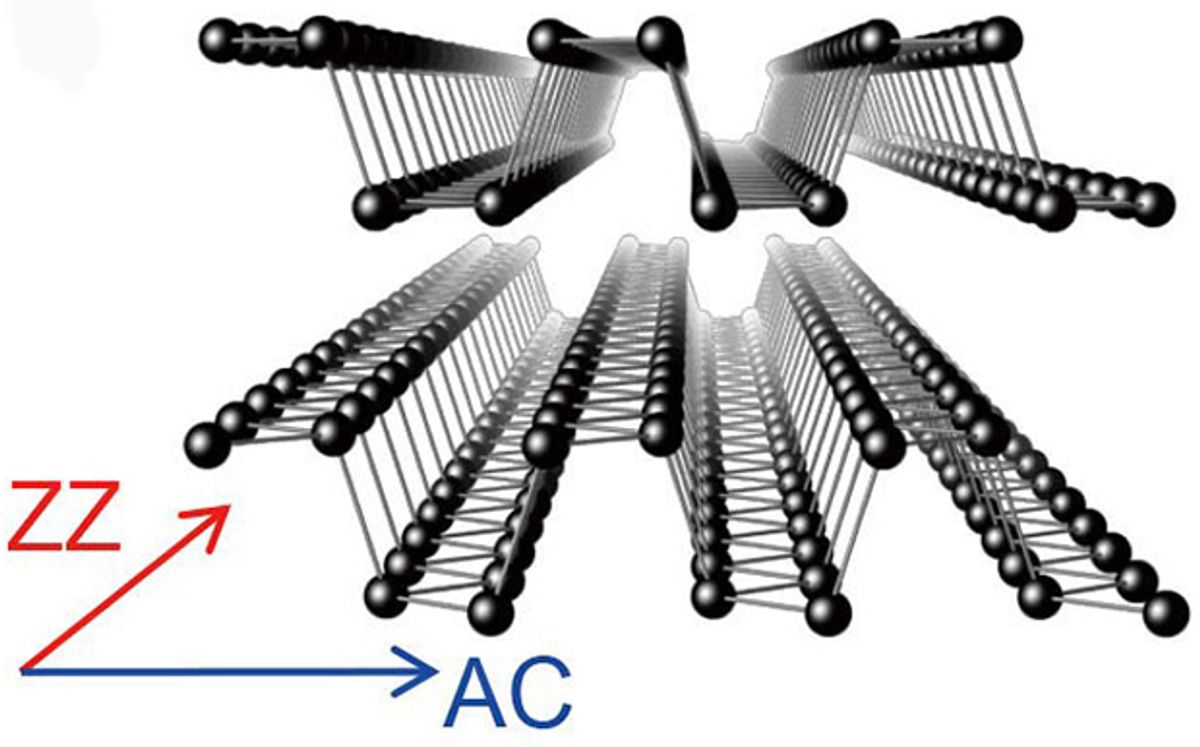Much has been made of the fact that black phosphorus has an inherent band gap that graphene lacks, making it a more natural candidate than graphene to step into the role of silicon as a semiconductor material for electronics.
While that’s a pretty big advantage over graphene, black phosphorus possesses another property that nearly all of its 2-D cousins lack: in-plane anisotropy, which means its properties are dependent on the direction of the crystal.
Now researchers at the U.S. Department of Energy’s (DOE’s) Lawrence Berkeley National Laboratory (Berkeley Lab) have demonstrated experimentally what had previously only been theorized in computer models: black phosphorous has opposite anisotropy in thermal and electrical conductivities. This means that in black phosphorus, heat flows more easily in a direction in which electricity flows with more difficultly.
“Our study shows that in a similar manner heat flow in the black phosphorous nanoribbons can be very different along different directions in the plane,” said Junqiao Wu, one of the Berkeley Lab researchers, in a press release. “This thermal conductivity anisotropy has been predicted recently for 2-D black phosphorous crystals by theorists but never before observed.”
What this means is that when a microelectronic device fabricated from black phosphorus starts to heat up, it will be able to dissipate that heat extremely efficiently.
“This anisotropy can be especially advantageous if heat generation and dissipation play a role in the device operation,” said Wu in the press release. “For example, these orientation-dependent thermal conductivities give us opportunities to design microelectronic devices with different lattice orientations for cooling and operating microchips. We could use efficient thermal management to reduce chip temperature and enhance chip performance.”
In research published in the journal Nature Communications, the Berkeley Lab team found that when they increased the temperature of the black phosphorus above 100 Kelvin, the thermal conductivity anisotropy grew by a factor of two.
They also discovered that at 300 Kelvin, the thermal conductivity of black phosphorus nanoribbons decreased as the nanoribbons’ thickness decreased from 300 nanometers to 50 nanometers.
In the future, the researchers plan to look at how other physical parameters such as stress and pressure impact the thermal and electrical properties of black phosphorus nanoribbons.
Dexter Johnson is a contributing editor at IEEE Spectrum, with a focus on nanotechnology.



